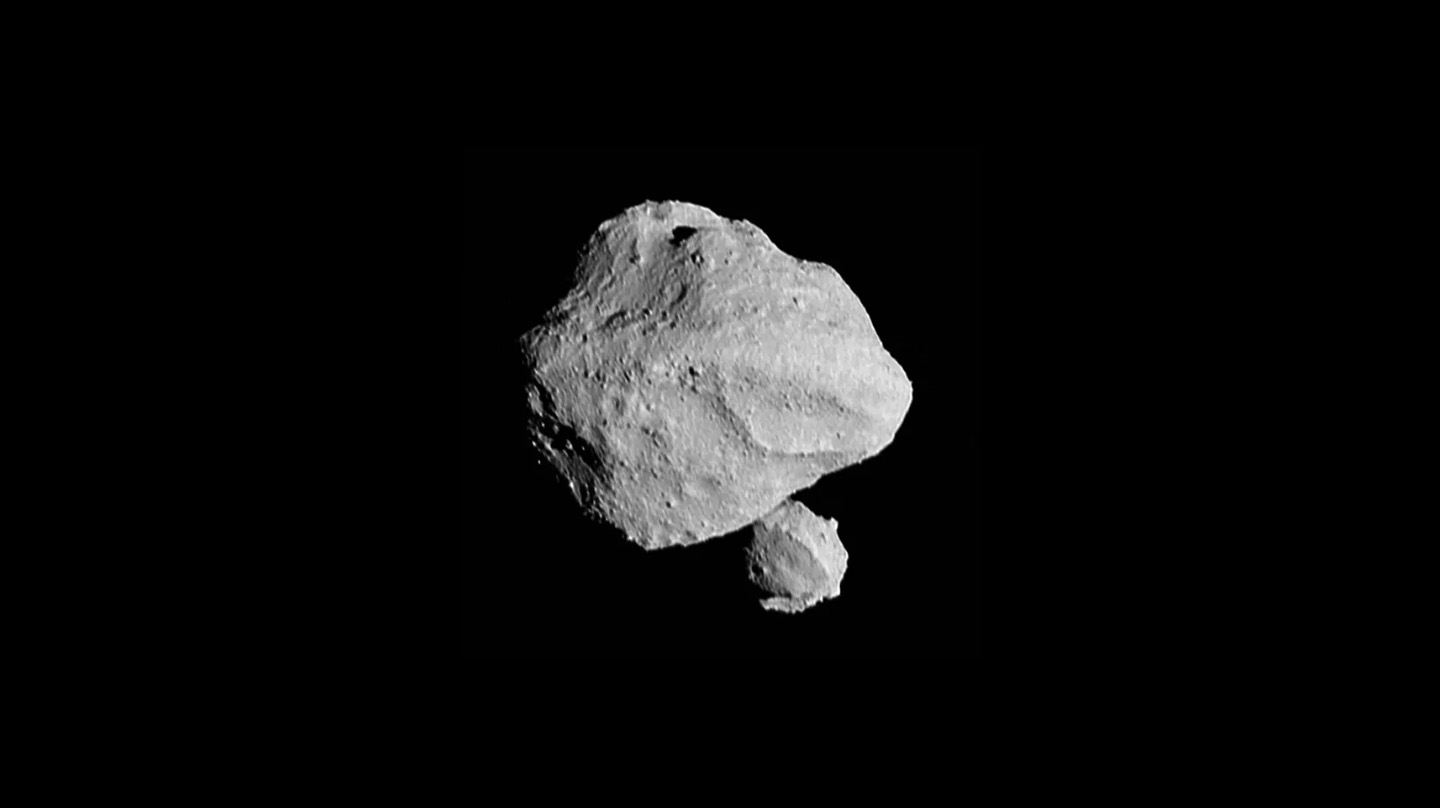Newswise — Scientists and engineers on NASA’s Lucy mission got a late Halloween treat on Nov. 1 when the spacecraft returned images of its first asteroid encounter. What was expected to be just one asteroid came back as two. Dinkinesh, the small main belt asteroid that Lucy was targeting, turns out to be a binary.
Lucy team members had already suspected this might be the case, having noticed in the weeks before the encounter that the asteroid’s brightness was varying in an unpredicted way. Now, the images captured by the Lucy Long Range Reconnaissance Imager (L’LORRI) instrument — built for the mission by the Johns Hopkins Applied Physics Laboratory (APL) in Laurel, Maryland — remove all doubt.
“We couldn’t have hoped for something this spectacular when developing L’LORRI because we had no idea,” said APL’s Neil Dello Russo, the L’LORRI instrument principal investigator. “But the results are nothing short of remarkable. The instrument worked flawlessly and has already made an unexpected discovery. We’re overjoyed.”
Dinkinesh — an Ethiopian name meaning “you are wonderful” — and its small satellite are petite. A preliminary analysis of the new images indicates the larger of the two asteroids is just around 0.5 miles (790 meters) at its widest. The smaller one is roughly 0.15 miles (220 m) in size.
“Dinkinesh really did live up to its name; this is marvelous,” said Hal Levison, the principal investigator for Lucy from the Boulder, Colorado, branch of the San-Antonio-based Southwest Research Institute. “When Lucy was originally selected for flight, we planned to fly by seven asteroids. With the addition of Dinkinesh, two Trojan moons, and now this satellite, we’ve turned it up to 11.”
Ultimately destined to explore the Jupiter Trojan asteroids — relics of the early solar system that orbit well ahead of and behind the gas giant — Lucy’s stop at Dinkinesh was to test its Terminal Tracking, a system that will make it possible for the spacecraft to autonomously track an asteroid while flying by at 10,000 mph (16,000 kph).
Even so, Lucy team scientists are excitedly poring over the new data to glean insights into the nature of our solar system’s small asteroids.
Over the next week, they’ll downlink the remainder of the spacecraft’s data from the encounter. The information returned will give the team insights into the spacecraft’s behavior, helping them prepare for the next encounter with the main belt asteroid Donaldjohanson in April 2025 and their first rendezvous with the Trojan asteroids in 2027.
MEDIA CONTACT
Register for reporter access to contact detailsRELATED EXPERTS
Neil Dello Russo
Planetary Astronomer, Cometary Scientist, Molecula Spectroscopist
Johns Hopkins University Applied Physics Laboratory

